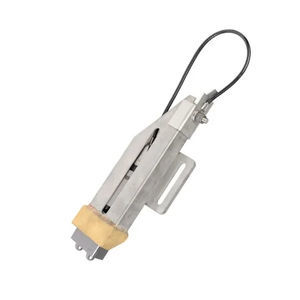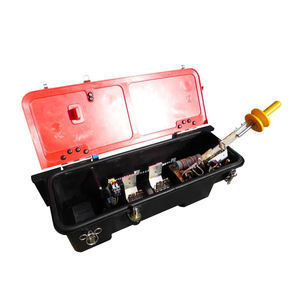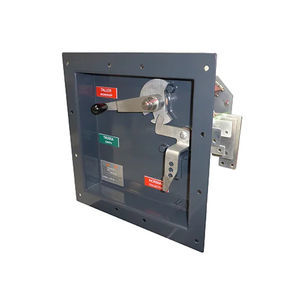
- Electricity - Electronics
- Electronic Component
- Resistor for railway applications
- Mersen Power Transfer Technologies
Embedded resistor for railway applications
Add to favorites
Compare this product
Characteristics
- Mounting
- embedded
- Applications
- for railway applications
- Resistance
0.04 Ohm, 0.05 Ohm, 0.1 Ohm
Description
Mersen proposes a range of On-board resistance. Those resistances have the function to artificially increase the resistance of the connection point in order to “push” the current through the ERCU.
When the train is stopped, the resistance value of the ground brush is superior at the value of the bearing so the current flows through it but when the rotation starts (train in movement speed ≥30 Km/h), the voltage value of the ground brush is inferior to the one of the bearing and the ERCU starts to shunt the current.
This is why you must install a resistance to increase the resistance value in order to keep the current flow through the ERCU even when the train is stopped.
Bearing deterioration due to current: Spark erosion
To cross a bearing, the current has to get through the interfaces between the rollers and the rolling surfaces. Then it has to get through the various insulating barriers formed by layers of metal oxides on the surface and by the lubricant.
So the current "breaks through" these dielectric surroundings in a series of small electrical arcs, a phenomenon that is sometimes called sparking.
This causes:
• Brief heating in very limited places of the metal making up the rolling surfaces and the rollers.
• Brief changes in the metallurgical structure, resulting in "crescents of white martensite".
• Those crescents then gradually lose cohesion and flaking develops, increasing over time.
The particles of metal that come loose during this phase will make the rollers slide on their rolling surfaces and impact them in places.
Catalogs
No catalogs are available for this product.
See all of Mersen Power Transfer Technologies‘s catalogsOther Mersen Power Transfer Technologies products
Power Transfer for Rail
Related Searches
*Prices are pre-tax. They exclude delivery charges and customs duties and do not include additional charges for installation or activation options. Prices are indicative only and may vary by country, with changes to the cost of raw materials and exchange rates.








